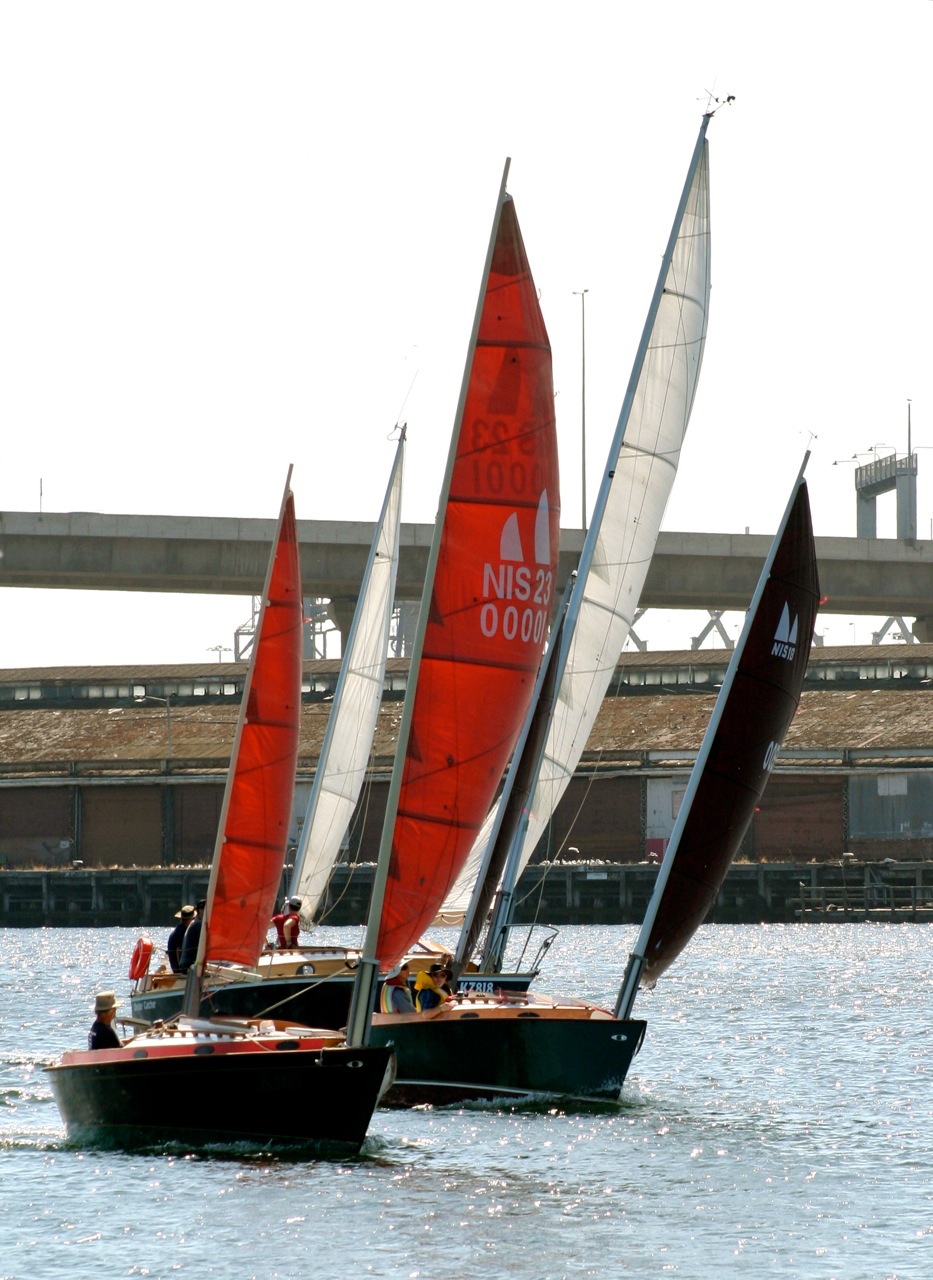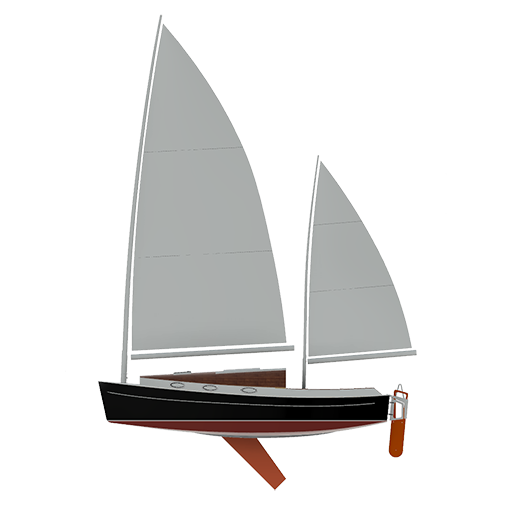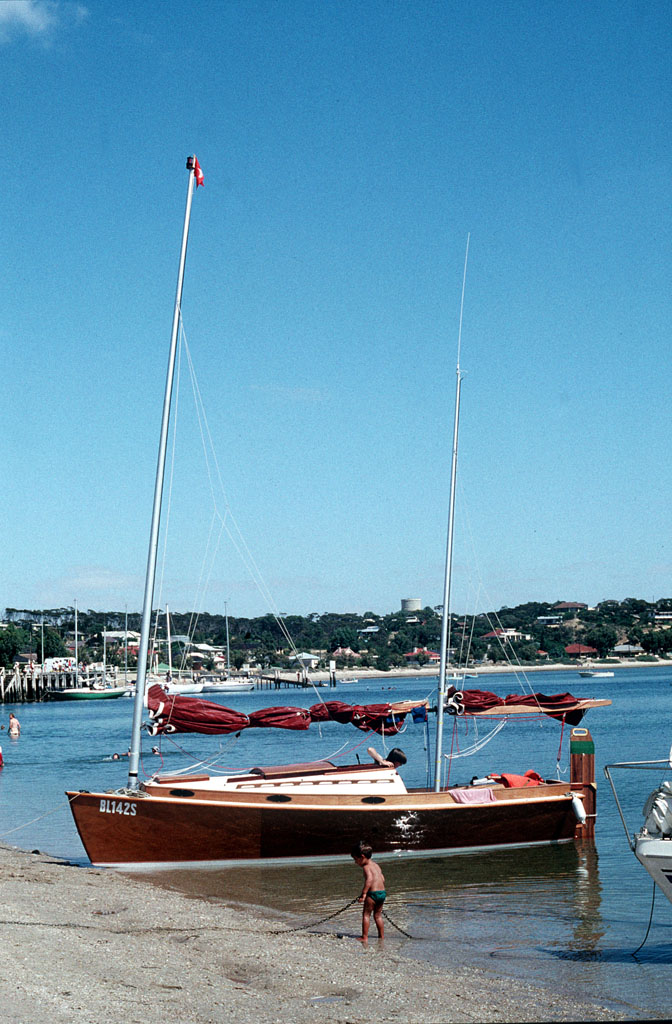
This is an excerpt from Robert Ayliffe’s website: www.straydogboatworks.com
The Sea Rescue Squadron meters indicated 60 plus knots for the whole of that time. I have built and owned lots of boats. In my early life I worked with them professionally, abalone diving. It was mostly off Kangaroo Island, especially on the uncharted lonely, rugged, southern ocean side. Next stop the Antarctic.
I have had the good fortune to have driven and sailed all of them in as beautiful and rugged waters as exist in the world. Life moves on, but Kangaroo Island is still my spiritual home, and it’s waters are the measure by which I judge all of my boats. These waters continued to inform me, over the past 18 years of my career with duck flat wooden Boats in South Australia. The first boat built with accommodation in that business, was my Norwalk islands Sharpies 23’er, Charlie Fisher. She was also the first NIS23 to be launched anywhere. Her first sea trip was wild and blustery from Cape Jervis across the notorious Backstairs passage to Penneshaw on Kangaroo Island, and then that trip to Port Vincent.
Of all of the boats I have owned or built, Charlie Fisher is the only one I have never wanted to sell. It just keeps getting better. Why is that? Well to begin with her ancestry is workboat. No fisherman ever went to sea in a boat that was likely to kill him, or more complex than it need be. Bruce Kirby is arguably the most successful sailboat designer of this era. Modern designer meets traditional workboat. The Laser alone will get him a tick from St Peter. Add to that Sonar etc etc and Americas Cup involvement. In recent times, the Norwalk Island Sharpies series.
That might get him to the big table. Bruce conceived the Norwalk Islands Sharpies line of yachts out of the need for a shallow, capable boat to access his own slowly silting waterway in Rowayton, on the edge of Long Island Sound.
The Sharpie type was a natural choice. The Rowayton Norwalk islands area of Connecticut was a famed oyster ground. The light, shallow, crossplanked, unstayed cat ketch sharpies were ubiquitous in this area, boats that could great loads of oysters across breaking bars to get to market early and safely. A crew of two was the norm, and the low sides facilitated the tonging of oysters from the shallow seabed.
The Norwalk Islands Sharpies are what happens when a racing and performance aesthetic meets workboat commonsense and heritage.
Now, the distinctive perky sheer and even more distinctive sail profile graces waterways from the British Isles, the Mediterranean, Australia and the Pacific, including New Zealand and the Solomon Islands. It is no surprise that Norwalk Islands Sharpies in all of the sizes have won all the popular inland waters races in Australia, and many ocean races as well.
Over the years, a conversation with Bruce has grown into a friendship, and conversations with owner and professional builders has grown into many friendships, and a vast storehouse of accumulated knowledge. Bruce continues his design work. It is my privilege to have been asked by Bruce to begin the first big revision of the instruction manuals and plans details to take into account all of this experience, and to provide an enhanced builder support service. We look forward to a new era, and especially, we look forward to extending our conversation, with your contributions to these pages for a very long time.
Robert Ayliffe.
If you want to meet more NIS nuts, there is an excellent forum on the Facebook. Follow this link to check it out.












2 replies on “What is an NIS?”
[…] The Norwalk Islands Sharpie https://paulsboat.wordpress.com/what-is-a-norwalk-island-sharpie/ […]
Thanks Jason!